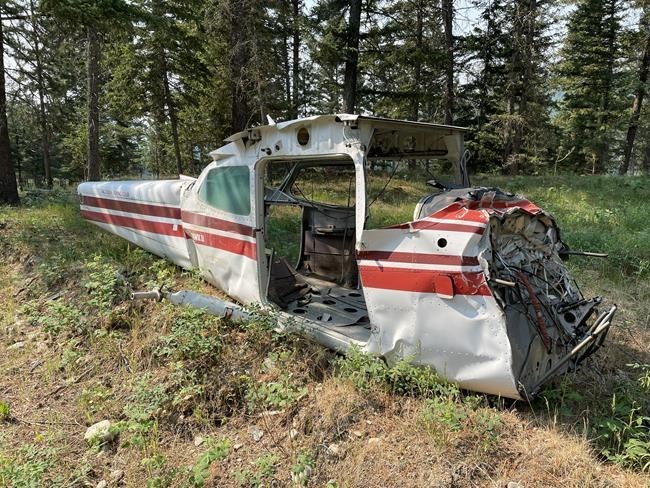KAMLOOPS — For the past couple years, the volunteer British Columbia air safety group PEP-Air has been using the skeletal fuselage of a light plane for training purposes on a private property north of Kamloops, B.C.
The wreck has no motor, wings, doors, seats, or propeller.
So Fred Carey, the group's executive director, is confused how the training ground could have been mistaken for a genuine historic plane crash.
“It’s pretty silly … I mean I just don’t understand how it could get this far," he said.
Officials announced earlier this week that a hunter had stumbled on what police thought was a decades-old crash site in the B.C. Interior.
A notice posted Tuesday on the Civil Aviation Daily Occurrence Reporting System said the RCMP inspected the site and "verified" the wreckage was at least 20 to 25 years old, and it carried no registration or identifying marks.
But Carey said in an interview on Friday that they planted the fuselage there two years ago "at the most," marking it with tags and a phone number to let people know it wasn't a real crash.
Carey said the training site has been in use for about 18 months, and has been registered with the Royal Canadian Air Force’s Joint Rescue Coordination Centre.
The report about the wreckage “made no sense," he said.
His group, which is part of the Civil Air Search and Rescue Association, has since contacted RCMP to let them know it isn't a real crash site.
"So, what was missed? I guess when Transport Canada and RCMP looked at it, they didn’t phone JRCC (Joint Rescue Coordination Centre) to see if it was real,” said Carey.
The Transportation Safety Board of Canada said in a statement on Friday that it had been made aware of the wreckage being found and it had been in contact with police and the Joint Rescue Coordination Centre, but it didn't have any additional information to share.
The RCMP did not immediately respond to questions about the site, near Knouff and Community lakes, north of Kamloops.
Carey said as a volunteer search and rescue volunteer group, they send members out to look for the simulated wreck as part of training exercises.
“We do need to train and we take our training very seriously and we try to make it as realistic as possible,” said Carey.
He said there are "quite a few" fake crash sites across B.C., although he would not give the locations.
He said it was clear neither the police nor the hunter looked inside the wreck, but it would have been apparent it wasn't a real crash had they done so.
— By Nono Shen in Vancouver
This report by The Canadian Press was first published Nov. 17, 2023.
The Canadian Press





